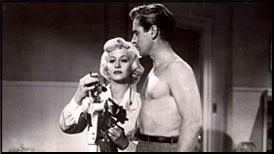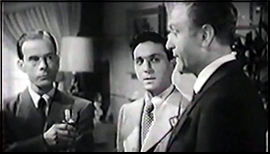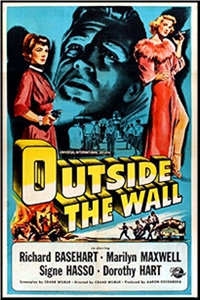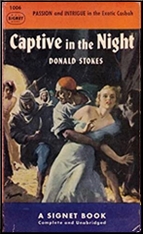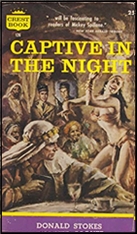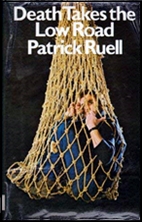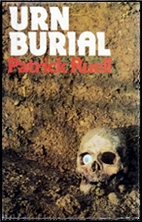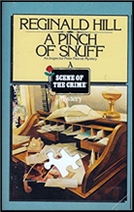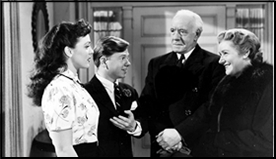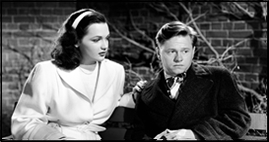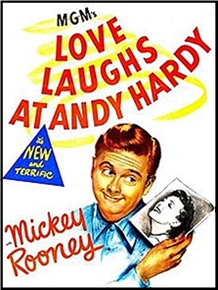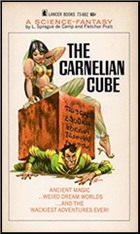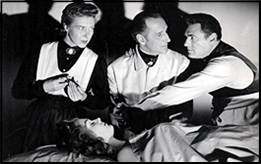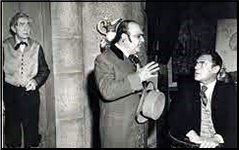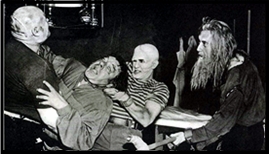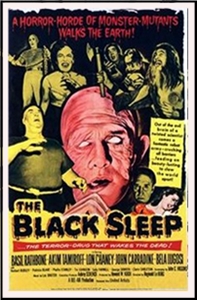Wed 25 Aug 2021
CON REPORT: PulpFest 2021, by Walker Martin.
Posted by Steve under Collecting , Conventions , Pulp Fiction[14] Comments
by Walker Martin
Finally, after two years a Pulpfest! Last year there was no convention because of the virus and I had not missed a show in a very long time. I almost went to Pittsburgh anyway in 2020 just to morosely hang out at the hotel but I couldn’t talk anyone else into driving out. But this year there was a convention and I swore I’d make it, pandemic or no pandemic.
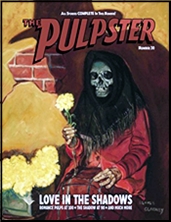
Since one of our group decided not to drive with us, there was only four of us and we therefore did not need the larger van. Driving out was nice weather, unlike the horror story driving back at the end of the show. We arrived at 3 pm on Thursday and found the dealer’s room to be busy with most tables set up for business. I estimate well over 300 in attendance and a hundred or so tables. I heard that attendance was supposed to be a lot larger but there was a 25% cancellation during the past two weeks as collectors either bit the dust or decided to not attend due to the pandemic.
The dealer’s room closed at 5 pm and was immediately followed by a great pizza party hosted by many of the dealers. I then hung out in the hotel bar with friends where I drank five pints of beer. I firmly believe that drinking a lot of beer helps scare away the virus. Also it was free, due to my fellow collectors who also believe that beer is the staff of life. Thank you Matt Moring, Richard Meli and the veteran whose name I did not catch. Later on the bartender claimed he did not pay the bar tab, and he came to me for payment. But I told him I only drink the beer. I don’t pay for it. Plus he’s a vet. He should get free beer.
The next morning I got up and followed my usual practice of getting rid of hangovers by eating a large breakfast and drinking plenty of coffee. I have to admit the hotel serves the best and largest buffet breakfast that I have ever encountered. It was delicious.
Then into action when the dealer’s room opened at 9 am. Masks were recommended and most started off wearing them but as the day progressed, the masks came off. I told Matt it was like a scene out of Fritz Leiber’s “Coming Attraction” in the November 1950 issue of Galaxy SF. Social distancing was followed, but then we stopped worrying and concentrated on buying pulps and books.
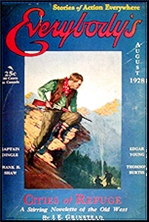
What did I buy? Well Doug Ellis had some great art for sale, especially cover paintings and interiors by Hubert Rogers. I almost bought some but I talked myself out of buying any since I have stacks of art leaning against my walls and bookcases. However history was made as my old friend Digges La Touche bought a cover painting from a paperback. In 50 years he has never bought art, except for one Barbara Cartland paperback cover. He always concentrates on buying masses of pulps, but no more I guess. I stop buying art and he starts.
I also found some of the extremely rare and hard to find large issues of Everybody’s from the WW I era. Sai Shanker had an excellent article in the new Pulpster about the history of Everybody’s. The magazine lasted 355 issues and went from slick to pulp. He will soon publish a collection of the best stories from the magazine. Speaking of upcoming books, Steeger Books, otherwise known as Matt Moring, will be coming out with a collection of “The Campfire” letters from Adventure in the twenties. These books are must buys if you collect fiction magazines.
As usual I had a table and sold some rare items. This time I had some duplicates of of the Manhunt Detective imitators. These digest magazines were published in the fifties and sixties and have sexy covers showing girls fighting or killing some poor guy. Cool! I’ve been collecting these digest since 1956, so I’ve been at it for 65 years. Time flies when you are having fun, and I considering collecting magazines to be a hell of a lot of fun. My wife thinks different.
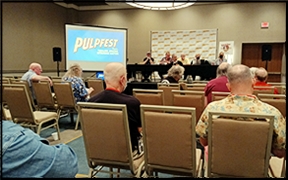
The Pulpster 30 was given to all the attendees and it was the best issue yet of all the 30 issues. William Lampkin is the editor and Mike Chomko the publisher. Copies are available from Mike Chomko Books and I give this magazine my highest recommendation. It’s large format, 8 1/2 by 11, 60 pages, and in color. Several articles were on The Shadow, including interviews with artists Jerome Rozen and Graves Gladney. Other articles dealt with the love pulps (escape literature for three million maidens), the debut of online newgroups dealing with pulps, the history of Everybody’s by Sai Shanker, Tony Davis on editor Dorothy McIIwraith, and a Darrell Schweitzer interview with Hugh Cave.
PulpFest is known for the great programming and all the panels and discussions were outstanding. If I had to pick one above all the others I would have to highly recommend Laurie Powers’ “The Queen and Her Court: Great Women Pulp Editors.” It is obvious that Laurie spent a lot of time on this presentation which deserves to be reprinted in a print magazine or book. It is a great example of original pulp research and not just the rehashing of well known facts.
Other programming was also noteworthy like the discussion on Shadow artists. This was supposed to be presented by David Saunders but he could not attend and Chet Williamson stepped in. I also liked Doug Ellis on Margaret Brundage and the discussion on Eva Lynd: Countess, Actress, and Cover girl. Eva Lynd was supposed to be the Guest of Honor but could not attend but she sent a very nice thank you film.
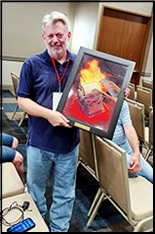
This was also the first year of ERBFest. I hope these Edgar Rice Burroughs scholars and fans will return next year. As usual the presentation of The Munsey Award was a highlight of the programming. This year’s award was given to Rich Harvey who has not only published many pulp books and magazines, but more importantly, has been the organizer behind the annual one day convention, Pulp Adventurecon. There have been more that 20 of these shows usually held in Bordentown during November of each year. Congratulations Rich!
The auction was held Saturday night and though there was no estate auction, many collectors contributed items of interest. Halfway through the auction an overpowering thirst descended upon me, and I adjourned to the bar where unlike Thursday and Friday, I had to pay for my own drinks. I forget which night it happened but the fire alarm went off, and we had to leave the hotel. Fortunately I had a full beer in hand and simply strolled out the door hoping that not too many pulps would be destroyed. Many other collectors had to get dressed and leave their beds. That’s what happens when you go to bed too early.
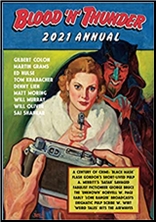
I was glad to see that Blood n Thunder had not bit the dust. The Blood n Thunder 2021 Annual made its debut as well as Sam Sherman’s When Dracula Met Frankenstein. Both published by Ed Hulse’s Murania Press.
Next year will be the 50th Anniversary of Pulpcon/Pulpfest. The first one was held in 1972 and I was there! I sure as hell wish all the other attendees were still around and we could have a panel discussing the good old days. But it’s getting down to The Last Man Standing and hopefully I’ll be present to talk about the way things were and what happened. In 1972 I was one of the youngest collectors present and now in 2021, I’m one of the oldest. My advice for a long life? Drink Beer and collect books, pulps, and art. It worked for me!
Driving home on Sunday was a mess. Heavy rain and the nagging fear of water in the basement. But I dodged the bullet again and my basement was dry. My pulps and wife welcomed me home.
I would like to thank the Pulpfest committee: Jack Cullers, Sally Cullers, Mike Chomko, Peter Chomko, William Lampkin, William Maynard, Tony Davis, Barry Traylor. I know I’m leaving out someone else and maybe Mike or Jack could list the correct committee in the comments.
Windy City Pulp Convention is only a couple weeks away. I hope to see you there!
